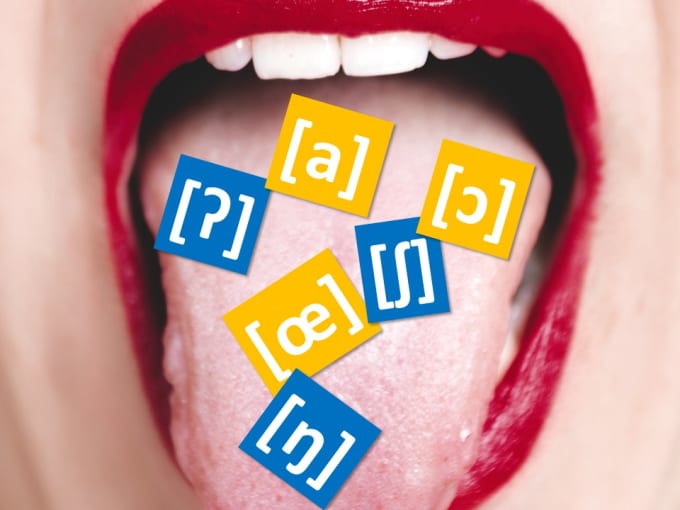While it is often challenging to determine the pronunciation of an English word solely based on its spelling, German phonetics boasts a much more consistent set of pronunciation rules. When certain letters are paired, they always produce the same sound in German. In fact, a spelling reform implemented by the German government in 1996 further simplified the application of regular patterns to pronunciation, particularly benefiting German learners.
This is advantageous for you, as mastering pronunciation rules will significantly contribute to your language acquisition, with far fewer exceptions to commit to memory. To begin, familiarize yourself with the German alphabet, including the unique sounds produced by vowels with umlauts (ä, ö, ü) and the distinctive double-S (ß).

How to Use a German Accent Mark
The German alphabet is quite similar to the English alphabet and the German language also has both short vowels and long vowels.
Long and Short Pronunciation of Vowels
German vowels can be categorized as either “long” or “short,” with the key distinction lying in the duration or stress of the vowel sound. “Long” vowels are applied when a vowel is followed by only one consonant (e.g., mag – like), when an -h directly follows the vowel (e.g., Sohn – son), or when the vowel is doubled (e.g., Meer – sea). Conversely, “short” vowels are utilized when a vowel is followed by more than one consonant (e.g., schmeckt – tastes), when the vowel is followed by a doubled consonant (e.g., hallo – hello or Männer – men), or when the vowel is an -e at the very end of a word (e.g., Glaube – faith or Freunde – friends). Generally, interchangeably using “long” or “short” vowels won’t impede comprehension in most cases.
Unique sounds
However, there are also three vowels with a German accent mark and one unique character (the “eszett”).
Umlauts in German function as assimilations or vowel harmonies, involving a modification of one sound to create a similar, more accessible sound. For instance, when pronouncing two vowels situated at the front and back of the mouth, articulating them closer together requires less effort than maintaining their distant positions.
Here is a brief explanation of how the German umlauts are pronounced, along with a few examples:
- Ä – “eh” or “ê” without gliding into “ey”:
- Mädchen (girl)
- älter (older)
- Väter (fathers)
- Äpfel (apples)
- Ö – “ê” and purse your lips into an O shape:
- öffnen (to open)
- Förderung (promotion)
- Hören (to hear)
- nötig (necessary)
- Ü – “ee” and then purse your lips as if you are whistling:
- fühlen (to feel)
- müssen (must)
- Türen (doors)
- über (over)
The eszett (ß) is pronounced like a regular “s” sound.
Common Mistakes
English speakers often tend to hastily skip or overlook letters within German words, particularly neglecting some letters, especially vowels, at the words’ conclusion. It’s crucial to bear in mind that in German, each letter deserves proper pronunciation. While there are exceptions to this rule, it’s generally advisable to ensure the distinct pronunciation of each letter, rather than amalgamating them into a single quick sound when there should be two distinct sounds.
This becomes especially vital during declension, where German exhibits similar-sounding case endings that elucidate a word’s role in a sentence. Accurate enunciation is essential in such cases. For instance, if the accusative possessive pronoun endings like “-en,” “-s,” or “-e” are not fully pronounced, ambiguity may arise regarding whether you’re referring to a masculine, neuter, or feminine/plural noun.
Initiate your journey by embracing the willingness to sound a bit amusing and speaking at an intentionally slow pace. Over time, this deliberate approach will naturally contribute to an improvement in both your speed and the overall fluency of your German. And remember that words that have the same meaning and spelling as English might still sound entirely different.

One of the biggest problems for many German learners is to find someone to speak to. And as soon as you have an opportunity and show the slightest weakness in your German pronunciation, native German speakers usually switch to speaking English with you. So, it is very important to work on your speech.
Plan B: Practice German pronunciation on your own with courses
The best option is to hire a native German, not necessarily a tutor, whom you hire to converse and to correct your pronunciation. But at times, money is short or there’s simply no native speaker available. In these cases, you need a plan B. While quite a few software- / web-based German courses come with some sort of voice recognition, these are either quite costly and would make a tutor seem priceworthy (Rosetta Stone) or simply do not work at all (Duolingo).
Luckily, there is an app store that holds high quality software for small prices like the Nemo German App here. Or you might give our German pronunciation course with 12 short and comprehensive videos a try.
The Benefits of Nemo German
While the vocabulary is put together rather randomly, at least organized in categories but not consistently like e.g. in the form of an ongoing story, the audio-studio that is integrated is sweet. It will present flashcards to you with content that you have selected before. You then have the option to record what you see and after that compare it to a native speaker.
Unfortunately, you do not hear the native speaker BEFORE you record your own version but only AFTER you have already read out loud what was written on that flash card. But after you have recorded it once, you have the option to re-record it and get a better grip on how well you have done as now you have got a real sandwich.
Listen to these samples from the app to get an impression of the sandwich-technique:
German Version: Wo ist das Badezimmer?
Audio Player
00:00
00:00
Use Up/Down Arrow keys to increase or decrease volume.
Greek version: Stin iyiá mas!
Audio Player
00:00
00:00
Use Up/Down Arrow keys to increase or decrease volume.
Why This App is Helpful
Comparing your own voice to that of native speakers is crucial for developing a feeling for the melody and pronunciation of German letter combinations, sentences and words. This process should be as smooth as it can be and Nemo German does the best job so far.
Schlussworte
I definitely will make sure that feature comes into the ultimate German learning app that I am still working on. Until then, why don’t you play around with Nemo German and practice your pronunciation every now and then.
Five to ten minutes two to three times per day will have an amazing effect on how Germans will understand you. And maybe soon they will stop switching to English when you speak to them. Regarding your regular German training, rather continue with your usual course material or book that you have been working on as the app, unfortunately, doesn’t offer consistent context.
How to Pronounce Long German Words
Mastering the pronunciation of long compound words may seem daunting, but the assumption that the length of a word correlates with its difficulty in pronunciation is not always accurate. German, as an agglutinating language, constructs words by combining smaller units. This characteristic of German vocabulary provides a distinct advantage for learners, as it allows them to deconstruct lengthy words into more manageable components, facilitating the learning process.
While it may initially appear challenging, breaking down these words into smaller units is surprisingly straightforward. Consider the following examples to better grasp this concept:
- Freundschaftsbeziehungen: This word, popularized by Mark Twain, can be dissected into two separate words – “Freundschaft” (friendship) and “Beziehungen” (relationships). Pronouncing each smaller part individually contributes to correctly pronouncing the entire word.
- Geschwindigkeitsbeschränkungen: Despite its intimidating length, this word, meaning “speed limit,” is composed of smaller words. It comprises two main words – “Geschwindigkeit” (speed) and “Beschränkungen” (restrictions), each of which can be broken down further into smaller particles.
So, rather than panicking when you see the length of the whole word, breaking it down and familiarizing yourself with the individual parts of the compound word enables you to pronounce them more easily.
Try Some German Pronunciation Exercises
Many German pronunciation exercises offer an enjoyable and cost-effective way to enhance your language skills. Here are some engaging ideas to refine your German pronunciation:
- Read Aloud: Grab a German book, article, blog, or even a shampoo bottle, and read the words aloud. Each word you practice pronouncing brings you closer to fluency and a more polished accent.
- Mimic Actors: Take advantage of authentic dialogues in German TV shows and films. Repeat what the actors are saying, as their pronunciation often represents a high standard for language learners.
- Tackle German Tongue Twisters: While challenging, experimenting with German tongue twisters can be both entertaining and beneficial for your pronunciation skills.
For instance, try mastering the classic German tongue twister:
Fischers Fritze fischt frische Fische, frische Fische fischt Fischers Fritze. (Translation: Fisher Fritz is fishing fresh fish; fresh fish is what Fisher Fritz is fishing.)
These exercises not only make language practice of any new language enjoyable but also contribute significantly to your progress in mastering the pronunciation of different sounds specific to the language.
Train Your Ear for the German Language
Regularly expose yourself to German by listening to German songs, audiobooks, and dialogues in German movies or TV shows. This consistent exposure to German sounds and letter combinations will finely tune your ear to the nuances of the language, and you’ll be amazed at how swiftly you acquire the accent. Here’s our German Alphabet Song that we created, for example.
Recall that our initial language acquisition as children largely relied on listening to adults conversing and mimicking their speech patterns. Embrace this natural approach when learning German, and you’ll find it immensely beneficial, as it helps you understand spoken German better over time and improves your language skills.
FAQs
Here are also some of the questions people ask about ways to master German pronunciation
How can I improve my German pronunciation?
Regularly listen to German music, watch movies or TV shows, and practice reading out loud to train your ear and enhance your pronunciation.
How can I learn correct pronunciation when speaking German?
Focus on accurately pronouncing German words correctly, start with trying to pronounce individual words
Also, practice speaking with a native German speaker and use pronunciation guides or language learning apps for guidance.
How do you pronounce the German sound “ch”?
This sound is pronounced differently, depending on its position in the word. When following the German vowels a, o, u, or au, the “ch” sounds like in the phrase ‘Loch Ness monster’. That’s the “ch” in words like das Buch (the book) and auch (also).
However, when “ch” doesn’t follow one of these specific letters, it produces a much softer sound, resembling the English ‘h’ but with a touch more friction. This softer pronunciation of the two letters is evident in words such as mich (me), welche (which), and wirklich (really).
What’s the ultimate German pronunciation guide?
There isn’t a single definitive “ultimate” pronunciation guide, as various resources and guides for learning German are available. Popular choices include online language learning platforms, pronunciation guides in language textbooks, and dedicated language learning websites. The effectiveness of a guide can vary depending on individual preferences and learning styles.
Summing Up: Practice German Pronunciation
When learning any foreign language it’s always key to listen actively and practice speaking any chance you get. Emphasizing the importance of breaking down compound words, this guide advocates practical exercises, including reading aloud and mimicking actors, providing an engaging learning experience.
Additionally, it highlights the significance of consistent exposure to German through music and media, aligning with natural language acquisition. Whether chatting to native speakers or using language learning tools like the Nemo German app, learners can refine their pronunciation and speak German more confidently.
